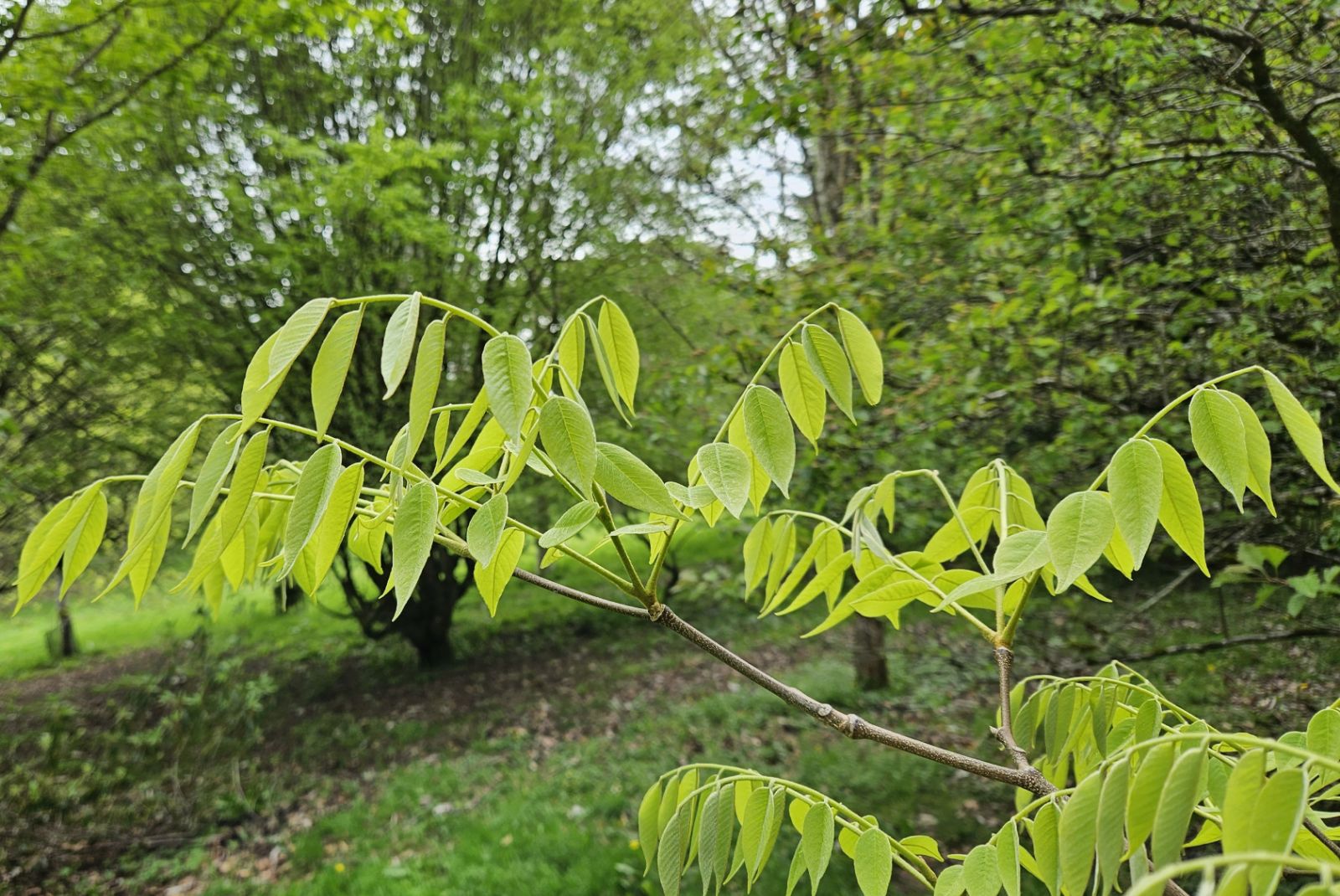Cladrastis shikokiana
Credits
Owen Johnson (2021)
Recommended citation
Johnson, O. (2021), 'Cladrastis shikokiana' from the website Trees and Shrubs Online (treesandshrubsonline.
Genus
Synonyms
- Sophora shikokiana Makino
Tree to 15 m, often with a spreading habit from a short bole. Bark grey or grey-brown, thin and smooth. Buds concealed through summer within the swollen base of the leaf-stalk. Leaves with (9)–11–(13) leaflets, each 4–12 × 1.6–5.3 cm, with a rounded to cuneate base and an acuminate tip; they are carried alternately on the rachis on petiolules which are glabrous or sparsely pubescent; leaflets are pale green or slightly greyish beneath, glabrous or with sparse whitish hairs under the veins. Inflorescence terminal or axillary, 14–27 cm long, drooping, with pedicels densely rusty pubescent; flowers opening May-June. Calyx campanulate, 7–8 mm, with triangular teeth, densely tomentose. Corolla white; flower c. 20 mm. Fruit-pods oblong, flattened, 6–7 × 0.8–1 cm, beaked at the tip. Seeds 4–6. (Duley & Vincent 2003).
Distribution Japan In the southern half of the country
Habitat Forests, to 500 m asl.
USDA Hardiness Zone 7
RHS Hardiness Rating H5
Conservation status Not evaluated (NE)
Cladrastis shikokiana seems to be a rare species, both in the wild and in cultivation. It has a scattered distribution at low elevations in the warmer south of Japan, as far north as Tokyo, and most closely resembles the Chinese C. wilsonii, differing in its slightly more lanceolate leaflets and its flowerheads which have rusty rather than greenish hairs (Duley & Vincent 2003). It is yet to receive a conservation assessment from the IUCN.
The only specimen seen during research for this article is one at Hergest Croft, Herefordshire, UK, which was donated by Roy Lancaster in 2014 from an unrecorded source (R. Griffiths pers. comm.) and which in woodland shelter had grown by 2023 into a small graceful tree four metres tall. Despite its southerly origins it seems well suited to this sometimes chilly site; the hardiness ratings suggested above remain, for now, a matter of guess-work.

